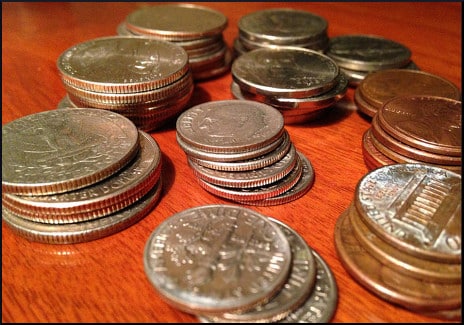 Childhood Obesity News would be hard-pressed to find another illustration as perfect as the one that accompanied “The Troubled History of the Soda Tax Concept.”
Childhood Obesity News would be hard-pressed to find another illustration as perfect as the one that accompanied “The Troubled History of the Soda Tax Concept.”
A huge peak shows where, in reaction to the threat of a federal tax on sugar-sweetened beverages, lobbyist spending increased ten-fold within a year.
By 2013, it had settled back to pre-threat levels, as corporations spent their money in other and maybe even more devious ways. The situation at the beginning of the year was combative, with battalions of attorneys standing at the ready, armed with numerous reasons why the government should not interfere with the aims and activities of their clients, the food and drink manufacturers.
In January, researchers from the U.S. and Italy issued a report to warn that, “during the last several decades, there has been a systematic underestimation of the hazards of obesity.” Given the number of “childhood obesity” Google alerts that flow through the ether each day, this is apparently no longer the case. The report also described the metabolic syndrome as “a constellation of obesity, lipid abnormalities, hypertension and insulin resistance, a precursor of diabetes,” and warned that 40 percent of American adults over age 40 already had it. Also, two-thirds of American adults were overweight or obese.
In 2014, all the big news originated in California. The state legislature was considering a bill that would require warning labels on juice and soda that contained added sugar and had 75 or more calories in each 12-ounce serving.
In September, Scientific American published a piece by Patrick Mustain about how the soda manufacturers observed Childhood Obesity Awareness Month. In a rather sarcastic tone, the writer saluted the American Beverage Association’s “long commitment to being a part of the solution to childhood obesity.”
The industry’s latest PR coup was the announcement of how it would “cut 90 percent of drink calories from schools.” This may have only happened because the writing was on the wall—the corporations knew that tighter regulation was inevitable, so they put a good face on it by volunteering to self-police, a little bit. The ABA bankrolled six grants, totaling $445,000, for obesity prevention projects, which Mustain describes in skeptical terms:
A pittance compared to the hundreds of millions spent on advertising, but a steal for the beverage industry–a small price for an attractive distraction. The six winners of this year’s grants were cities that for some reason did not address one of the most significant drivers of childhood obesity: sugary beverages.
He goes on to outline the latest atrocity—“a multi-million dollar campaign to crush a couple of California ballot measures aimed at increasing the price of sugary beverages”—and cites evidence that a soda tax could “reduce consumption, improve health and raise revenue for public health programming.” There, once again, is the problematic assumption that the money collected would be applied against obesity in any way.
Your responses and feedback are welcome!
Source: “_Obesity approaching cigarette smoking as leading avoidable cause of premature deaths worldwide,” ScienceDaily.com, 01/31/13
Source: “The Case for Health-Warning Labels on Soda,” TheAtlantic.com, 02/18/14
Source: ““You’re Welcome.” How The Soda Industry Celebrated Childhood Obesity Awareness Month,” ScientificAmerica.com, 09/30/14
Image by The Presbyterian Church of Wyoming

 FAQs and Media Requests:
FAQs and Media Requests: 











